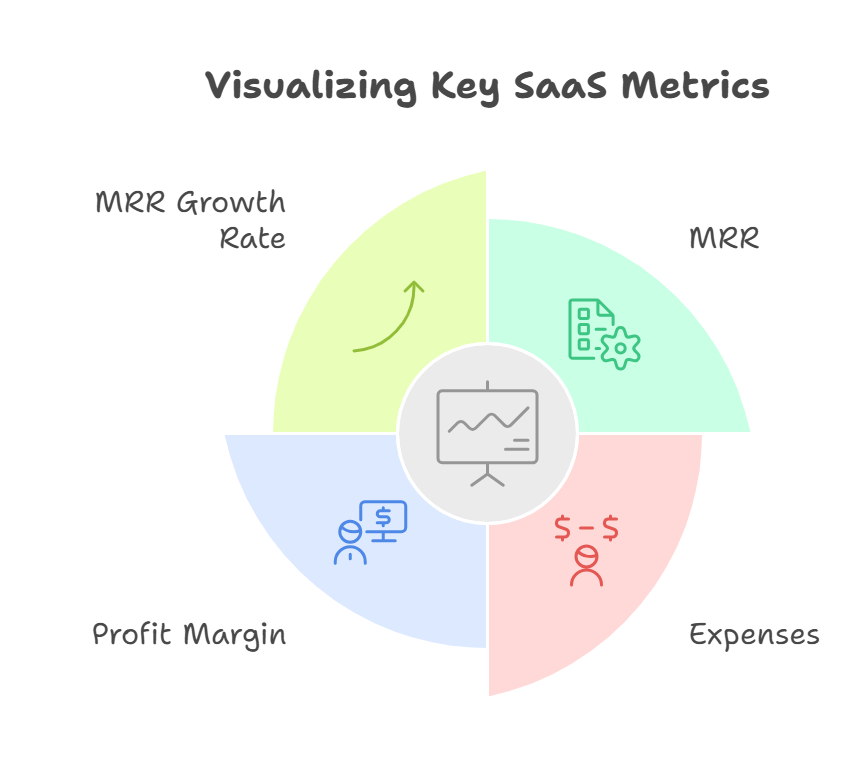Did you know that businesses worldwide lose $3 trillion annually to bad data? Yes, you read that right. For SaaS businesses, where accuracy and efficiency drive growth, such errors can be a silent revenue killer.
Whether it's a missed subscription renewal or a miscalculated Monthly Recurring Revenue (MRR), manual data entry often leaves room for mistakes.
But here’s the good news: automated data entry systems can be a game-changer. Imagine having your accounting processes run seamlessly, freeing up time to focus on innovation and customer satisfaction. Sounds exciting, right?
Let’s explore how automated data entry accounting systems can help your SaaS business thrive.
1. Improves Financial Accuracy
Manual data entry is prone to errors—misplaced decimals, duplicate entries, or incomplete records. These small mistakes can lead to big problems, from incorrect financial statements to compliance risks.
How Automation Helps
Automated systems eliminate human errors, ensuring accurate and consistent data entry. They integrate with tools like CRMs and subscription management platforms, syncing data seamlessly.
Example: Suppose a SaaS company relying on spreadsheets for financial tracking found that manual errors led to discrepancies in revenue reporting. After trying an automated system, they noticed a significant improvement in data accuracy within the first quarter.
2. Saves Time and Reduces Operational Costs
Let’s face it: manual data entry is time-consuming and expensive. For a SaaS business handling hundreds (or thousands) of customer transactions, this can drain resources quickly.
How Automation Helps
Automation speeds up data entry processes, cutting hours of manual work to just minutes. It reduces the need for additional staffing, lowering operational costs.
Time-Saving Comparison Table:
| Task | Manual Data Entry | Automated Data Entry |
|---|---|---|
| Processing 100 invoices | 10 hours | 1 hour |
| Reconciling payments | 8 hours | 30 minutes |
| Generating reports | 5 hours | Instantly |
3. Enables Real-Time Insights and Analytics
In the fast SaaS world, waiting for end-of-month reports just won’t cut it. You need to know what’s happening with your revenue, expenses, and customer churn rates in real time.
How Automation Helps
- Automated systems offer dashboards with up-to-date financial metrics.
- Real-time data helps identify trends and make proactive decisions.
Key SaaS Metrics to Monitor:
- Monthly Recurring Revenue (MRR)
- Customer Lifetime Value (CLTV)
- Churn Rate

4. Streamlines Revenue Recognition Compliance
Compliance with accounting standards like Ind AS 115 is critical for SaaS businesses. Missteps here can result in hefty fines or lost investor confidence.
How Automation Helps
- Automatically tracks and records revenue according to compliance requirements.
- Reduces the risk of errors during audits.
Example: Assume a growing SaaS startup struggled with tracking deferred revenue manually. Implementing an automated system simplified the process, helping them comply with Ind AS 115 effortlessly.
5. Enhances Scalability and Growth
Your SaaS business might be small today, but what about tomorrow? Scaling means handling more customers, transactions, and data.
How Automation Helps
- Automated systems can handle increased data volume without additional resources.
- They integrate with other tools, ensuring smooth scaling.
Pro Tip: Use an automated data entry system that offers APIs for integration with your CRM and billing platforms.
Growth Impact Chart:
| Business Size | Manual System Efficiency | Automated System Efficiency |
|---|---|---|
| Small (100 clients) | 80% | 95% |
| Medium (1,000 clients) | 60% | 90% |
| Large (10,000+ clients) | 30% | 85% |
Not Just Tools
Automated data entry accounting systems are not just tools—they’re strategic assets for SaaS businesses.
From improving financial accuracy to enabling real-time insights and scaling with ease, the benefits are undeniable.
If you’re still relying on manual processes, it might be time to rethink. Automation doesn’t just save time; it sets the foundation for sustainable growth.
Ready to take your SaaS business to the next level?
*Try Vyapar TaxOne for free for a week!*
FAQs
What is automated data entry?
Automated data entry uses software to capture, process, and store data without manual input, ensuring accuracy and efficiency.
Why is automated data entry important for SaaS businesses?
It simplifies financial management, reduces errors, saves time, and ensures compliance with accounting standards.
How do I choose the right system for my SaaS business?
Look for features like real-time reporting, compliance support, scalability, and seamless integrations with existing tools.
Also Read: 6 Features to Look for in an Automated Accounting Software












